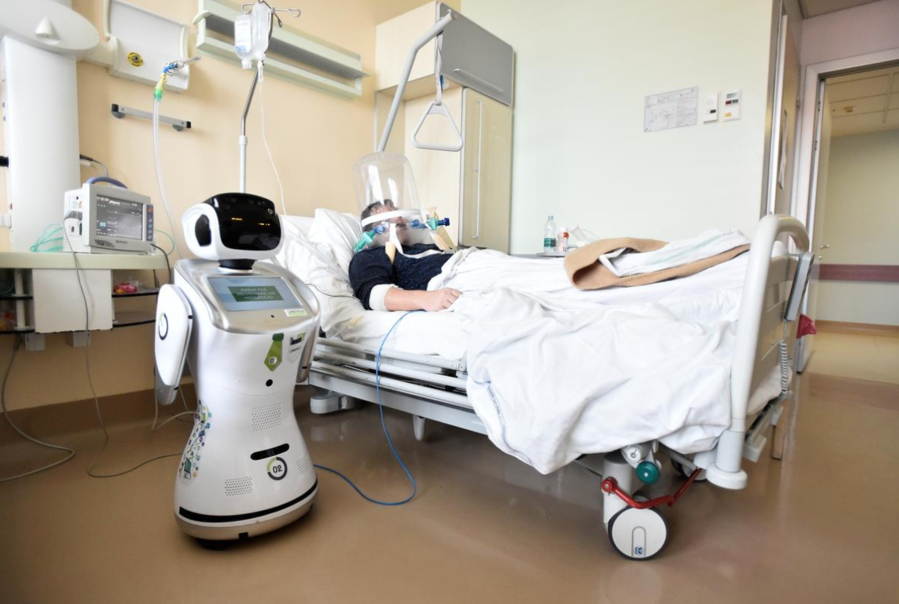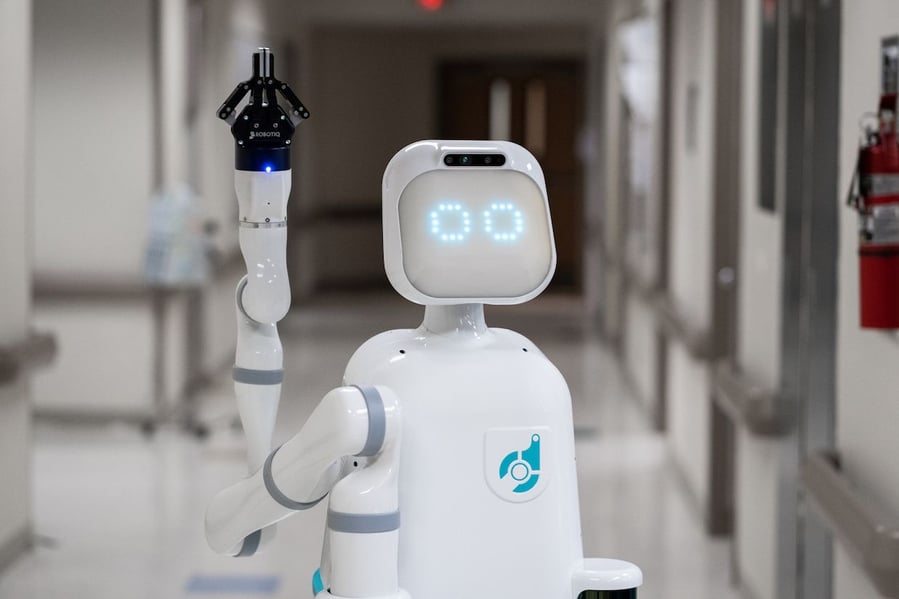Robots are Changing the Fight Against Coronavirus
As the coronavirus pandemic rages on and stay-at-home measures stay in place, it’s safe to say that pretty much everyone’s life has been upended by this point. But a silver lining is emerging in the form of highly advanced robots being thrust into new roles to combat the disease. And instead of being viewed as evil or job-stealing, these robots are seen as solution providers, and even essential to supporting the government’s frontline endeavors.

Historically, robots were invented to take on tasks that were repetitive, menial, and even hazardous. They were designed to make life easier and safer for humans, particularly in industrial applications. Now, almost a century after their invention, a recent issue of the Science Robotics journal featured a poignant article entitled “Combating COVID-19—The role of robotics in managing public health and infectious diseases.” It’s the work of a collaborative team of researchers including Henrik Christensen, director of the University of California, San Diego (UCSD) Contextual Robotics Institute, as well as Marcia McNutt, president of both the National Academy of Sciences and the National Research Council. The researchers agree that robots are suited for the healthcare industry because “combating infectious diseases involves an environment that is unsuitable for human workers but is suitable to robots…..now, the impact of COVID-19 may drive further research in robotics to address risks of infectious diseases.”
Essentially, the researchers believe that “COVID-19 may become the tipping point” that catapults medical robotics into more widespread use, particularly in times of pandemic.They can, for instance, be deployed to assist with “disinfection, delivering medications and food, measuring vital signs, and assisting border controls,” — in other words, with decontamination, logistical delivery, and certain clinical tasks, not to mention reconnaissance and monitoring in certain fields of operation to ensure that all workers are complying with protocols.

Decontamination is especially challenging on human workers. The researchers emphasized that “opportunities lie in intelligent navigation and detection of high-risk, high-touch areas, combined with other preventative measures. New generations of large, small, micro, and swarm robots that are able to continuously work and clean (i.e., not only removing dust, but also truly sanitizing/sterilizing all surfaces) could be developed.”
Other vital areas that stand to benefit from robotic assistance are those of telemedicine and telepresence. That is, “the deployment of social robots can present unique opportunities for continued social interactions and adherence to treatment regimes without fear of spreading more disease.” Besides, robots can take the form of artificial intelligence avatars who can virtually assist people at select digital kiosks.
In fact, Indiana’s Tribune-Star publication shared that the Rural Health Innovation Collaborative (RHIC) Simulation Center at Union Hospital recently repurposed their digital avatar robots to assist with the spike in registration and admission of new patients while simultaneously functioning “as a safe go-between for patients, families, and staff.” More specifically, “the double-robotics telepresence means questions get asked and answered remotely.” Each of the 12 total robots “are stationed in different parts of the hospital…and are being used primarily for registration and triage areas of the emergency department.” In so doing, patients, family members, and hospital staff can communicate with one another through the telepresence avatars without running the risk of exposing themselves to COVID-19.

And, in still another example from IEEE Spectrum, the nurse-helping robot Moxi helps maximize efficiency by tackling repetitive chores that would otherwise take up precious man-hours. With this labor being redistributed to Moxi, her human counterparts don’t have to waste any energy grabbing supplies and restocking supply rooms. Instead, they’re free and available to handle other more challenging tasks that require the human touch.
As Input Magazine adds, “By letting Moxi do the bulk of these administrative chores, nurses can have more time to spend on the crucial business of patient care.” And since’s she’s also equipped with self-cleaning and self-disinfecting abilities, it’s safe to say her deployment would be very welcome right about now.




